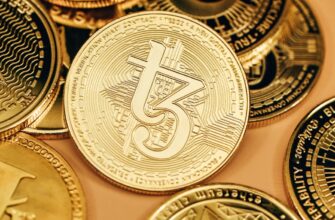- Understanding NFT Taxation in Australia
- Are NFT Profits Taxable in Australia?
- Step-by-Step Guide to Reporting NFT Profits
- Step 1: Determine Your Tax Classification
- Step 2: Calculate Capital Gains
- Step 3: Convert Crypto Values to AUD
- Step 4: Report on Your Tax Return
- Essential Record-Keeping Requirements
- FAQs on Reporting NFT Profit in Australia
- Do I pay tax if I transfer NFTs between my wallets?
- How are NFT losses treated?
- Are NFT royalties taxable?
- What if I bought NFTs with cryptocurrency?
- Can I use the personal use asset exemption?
- How does the 12-month CGT discount work?
- Proactive Compliance Saves Headaches
Understanding NFT Taxation in Australia
As Non-Fungible Tokens (NFTs) explode in popularity, Australian investors must navigate complex tax obligations. The Australian Taxation Office (ATO) treats NFTs as taxable assets, meaning profits from sales trigger capital gains tax (CGT) or income tax liabilities. This guide breaks down exactly how to report NFT profits correctly to avoid penalties.
Are NFT Profits Taxable in Australia?
Yes. The ATO classifies NFTs as CGT assets, similar to shares or property. You’ll owe tax if:
- You sell an NFT for more than its acquisition cost
- Trade NFTs for cryptocurrency or other assets
- Earn royalties from NFT creations
- Receive NFTs as payment for services
Even NFT losses must be reported – they can offset gains from other investments.
Step-by-Step Guide to Reporting NFT Profits
Step 1: Determine Your Tax Classification
- Investor: Pay CGT on profits (50% discount if held >12 months)
- Trader: Profits treated as ordinary income (no discount)
- Creator: Royalties taxed as income; creation costs may be deductible
Step 2: Calculate Capital Gains
Use this formula: Sale Price – (Cost Base + Fees) = Capital Gain
Your cost base includes:
- Original purchase price (in AUD equivalent)
- Gas fees and transaction costs
- Platform commissions
- Expenses to create or improve the NFT
Step 3: Convert Crypto Values to AUD
All transactions must be reported in Australian dollars. Use:
- Exchange rates at transaction time
- ATO’s crypto record-keeping tools
- Platform-provided tax reports
Step 4: Report on Your Tax Return
- Individuals: Use Item 18 (Capital Gains) in your annual return
- Businesses: Include in business income statements
- Report each disposal separately or provide a summary with detailed records
Essential Record-Keeping Requirements
The ATO requires 5-year retention of:
- Transaction dates and times
- Wallet addresses involved
- NFT identification details (contract address, token ID)
- Exchange records showing AUD values
- Receipts for related expenses
Use crypto tax software like Koinly or CoinTracker to automate tracking.
FAQs on Reporting NFT Profit in Australia
Do I pay tax if I transfer NFTs between my wallets?
No – transfers between personal wallets aren’t taxable events if you retain ownership.
How are NFT losses treated?
Capital losses offset capital gains. Unused losses carry forward indefinitely.
Are NFT royalties taxable?
Yes – creators report royalties as ordinary income. Deduct related creation costs.
What if I bought NFTs with cryptocurrency?
This triggers two CGT events: disposal of crypto + acquisition of NFT. Both must be reported.
Can I use the personal use asset exemption?
Rarely. The ATO typically rejects this for NFTs unless purchased under $10,000 AUD for personal enjoyment (not investment).
How does the 12-month CGT discount work?
If you hold an NFT >12 months before selling, only 50% of the capital gain is taxable.
Proactive Compliance Saves Headaches
With the ATO intensifying crypto surveillance, accurate NFT reporting is non-negotiable. Consult a crypto-savvy accountant if you’re uncertain – penalties for errors can reach 75% of unpaid tax. Document every transaction meticulously, and remember: even “play-to-earn” NFT games generate taxable income. Stay compliant to enjoy Australia’s booming digital asset space with confidence.








